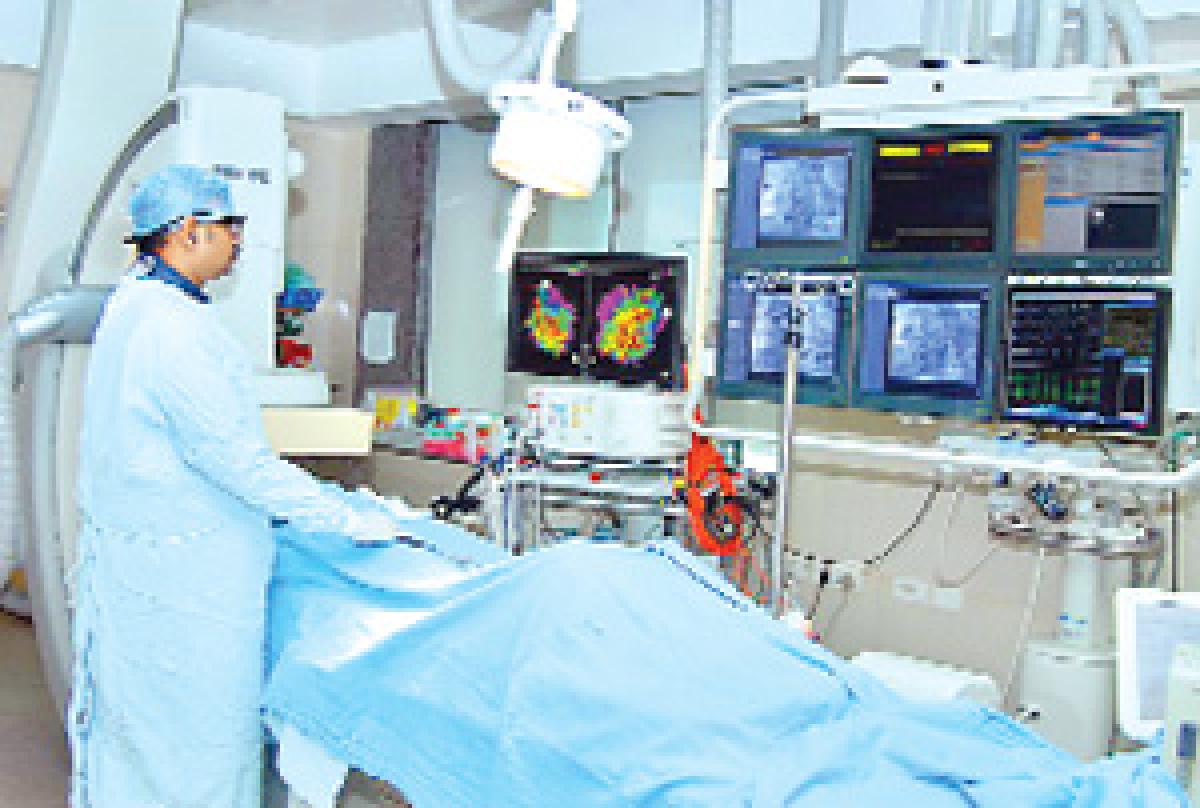Live
- New TTD Trust Board to meet in Tirumala today
- Drone survey held for laying smart roads
- MyVoice: Views of our readers 18th November 2024
- It’s time to defeat betrayers: Revanth in Maharashtra
- Committees formed, assigned tasks
- Let law and order be in sole domain of union!
- Group-III exams off to a smooth start
- KTR invited as guest of honour at TiEcon Kerala 2024
- KTR gets his freedom in a deal done in Delhi: Bandi Sanjay
- Hyderabad Ready to Host FIFA Friendly Football Match Between India and Malaysia
Just In

KIMS Hospitals, Hyderabad, has once again garnered limelight with its challenging treatment of ventricular tachycardia, the dangerous heart rhythm. Some patients, who survive a heart attack, can develop dangerous ventricular arrhythmias later, which can lead to sudden death.
The new techniques help cardiologists to manage heart attack patients more effectively and increase their chances of survival
KIMS Hospitals, Hyderabad, has once again garnered limelight with its challenging treatment of ventricular tachycardia, the dangerous heart rhythm. Some patients, who survive a heart attack, can develop dangerous ventricular arrhythmias later, which can lead to sudden death.
When numerous episodes of these abnormal rhythms occur continuously, it is life-threatening and a nightmare for the treating doctors. Until now there was no safe therapy for these patients except waiting for medicines to work and most of these patients usually succumb to the fast arrhythmias.
Electrophysiogists from two institutes - KIMS Hospitals, Hyderabad and University of California Los Angeles jointly published their experience in performing successful ablation of ventricular tachycardia in the presence of a clot in the ventricle. This was published in this month’s issue of the reputed “Journal of Cardiovascular Electrophysiology”, and this is the first publication of such cases in literature.
Prof. Usha B Tedrow, Associate Director, Electrophysiogy Programme, Brigham and Women's Hospital, Harvard Medical School, Boston, USA, wrote, “The authors ought to be commended on their successful management of such high-risk group of patients,” in an editorial in the same journal, about this paper.
According to Dr B Hygriv Rao, who initiated the collaborative work, this is a series of cases where patients presented in a very serious situation where survival was nearly impossible. These patients were on artificial ventilation and all medications in maximum doses were already administered. By careful planning and skillful usage of modern technology, the arrhythmias were treated and these patients were rescued.
For each patient Dr Rao and his team spent six-eight hours in the cath lab, patiently mapping and destroying abnormal areas of the heart carefully avoiding the clot in the vicinity. Cardiologists involved in treating such patients with dangerous heart rhythms can now use this information and confidently attempt to perform these life-saving procedures.
The new techniques and results from this publication help cardiologists to manage heart attack patients more effectively and eventually increase their chances of survival.

© 2024 Hyderabad Media House Limited/The Hans India. All rights reserved. Powered by hocalwire.com







